Spend any time on the town after dark and you will spot the tramp: flashy and provocative, this is the woman who reeks of desperation and has the clothing to prove it. She’s got the lei around her rearview mirror, a phone full of duck-lip-mirror shots, and you know she goes by the first-and-middle-name-porn-star combination online. She’s ripe for the picking as the low-hanging fruit and….(shockingly) it works.
In the end, though, the tramp is an utter disappointment as she lacks substance and depth. She’s great for convenience and not much else.
Grocery store tramps are just the same: Packaged in flashy colors and promises of goodness, grocery store tramps are easy to pick up, easy to prepare, and ultimately…disappointing.
Don’t Let These 5 Grocery Store Tramps Jump in Your Bag:
1. A Large Vat of Olive Oil:
There are lots of things that you can and should buy in bulk, but olive oil is simply not one of them. For me, it’s all about the storage and usage.
Olives and their oil are fruit, and fruit will go rancid when exposed to temperature fluctuations and oxygen. To keep good quality olive oil from turning, you need to store it in a cool place away from light: in a wine cellar, kitchen cabinet away from the stove, etc. The problem is that if you buy a great deal more than you will actually use within a month or so, that huge vat of oil may be sitting for a while. Olive Oil has a shelf life of a few months after it’s produced and initially bottled. The longer you leave it around, the greater the risk that it will go rancid as you open and close the container (rancid oil tastes like butter). Would you eat fruit that has been sitting out for months at a time? Ew. No.
Instead:
Buy oil in small quantities and make the committment to store it correctly to reduce the risk of spoilage.
2. Canned Green Beans
My previous post on Haricot Vert detailed my dislike for canned green beans. I am sure that the Jolly Green Giant now has it out for me, but canning gorgeous green vegetables like green beans just turns them into smelly, metallic mush.
Why do that? If you are concerned about cost, check out Dr. Barb’s analysis on cost and nutrition.
Instead:
In just a little more time than it takes to crack open a can of green beans, dump them into a bowl, and microwave them (I die! I die!), you could steam fresh versions over the stove. The taste is so much better…and nutrtionally, you are getting more bang for your buck.
Quick Steamed Green Beans:
Ingredients:
- Fresh Green Beans – Buy, wash, and trim the ends.
- Water OR Chicken Broth – Water will do just fine, but if you want to add a little more flavor, use the broth.
The Tools:
- Large Saucepan and Lid
- Colander – You will need one that fits inside the pan
The Action:
- Fill the pan 1/4 of the way with water (or broth) or to the point where the water level is well below the colander. Remember, you are steaming and not boiling so the water shouldn’t touch the colander at all.
- Place the green beans in the colander.
- Bring the liquid to a boil.
- Place the colander over the boiling liquid and let it rest there. Move the green beans around to ensure coverage. Cover to keep the steam captive.
- Watch the green beans to ensure that they steam to your liking. If you like them more firm, you will need to steam them for less time than if you want them a little softer.
- When they are ready, remove and serve.
For those of you who are still concerned with time…you can buy green beans in a bag in the produce department and steam them in the microwave. Anything is better than canned.
3. Canned Cheese
I’m a good Sicilian girl, so I am naturally adverse to canned cheese – it’s just in my genes. In the photo above, you can see that both of these products say “100%” on them.
Uh.
100% what? 100% cheese without fillers perhaps? Well, guess what? “Parmesan” is 100% BS. True story. This cheese in a canister is supposed to give the consumer the idea that it is somehow related to Parmigiano-Reggiano. It’s not. If anything, it’s a weak attempt to replicate one of Italy’s masterpiece products.
Without diving too deeply in, Parmigiano-Reggiano is cheese that is produced in specific regions of Italy using specific methods and processes. A set of Italian laws – Denominazione di Origine Controllata – protect imitators who do not meet specific standards from calling their products Parmigiano-Reggiano. When you are eating cheese from a can, you are essentially eating fake Parmigiano-Reggiano.
If that’s cool with you, then keep going with it. But, seriously, you are missing out on the exceptional flavor that is Parmigiano-Reggiano.
Instead:
Try the real thing: hit the grocery store. Parmigiano-Reggiano is sold in wedges cut from a larger wheel. When you buy it, you usually buy it at a per-pound price. Ensure that you are getting Parmigiano-Reggiano by reading the label – you are looking for a product that is made in Italy. If in doubt, check out the rind for a production date and name in pin-dots. You should be able to smell the cheese through the plastic wrap.
You can grate this cheese over pasta, salad, veggies, etc. using a microplane or grater. You can even eat a little straight – have some prosciutto with it and it’s like you have died and gone to heaven.
To store Parmigiano-Reggiano, wrap it tightly in plastic wrap (no foil!) and store in the refrigerator away from other strong-smelling foods. The shelf life is about 3 weeks or so.
Bonus! The rind. Keep the rind. You can use it to flavor sauces, soups, stews, etc.
4. Garlic in a Jar
I just don’t get this stuff. Garlic chopped up, processed, and sitting in oil or citric acid or some other liquid. Where did this garlic come from? How long has it been sitting in the jar?
I have asked around and it seems that most people who use this do so for convenience. I get it. I do. Mincing garlic takes some time: you have to peel each clove and then cut it delicately and many of us just don’t have the patience or knife skills to make it happen.
Then there’s the argument of frequency. Some who swear by the jar cite the fact that they just don’t use garlic enough to buy a whole bulb. Well, if you don’t use it often, then there’s no reason to have a whole jar of minced stuff in the fridge, is there? (Because really, are you going to let that jar sit there for 6 months? You are? You want to use six-month old garlic in your cooking? Don’t do that.)
Instead:
Buy the fresh. Garlic is cheap.
If it’s time that bothers you, learn to chop fast: Take the bulb of garlic and smash it on your cutting board to break the cloves apart. To quickly peel each clove, place it on the cutting board and place the side of your knife blade over it and give it a quick smash with the heel of your hand: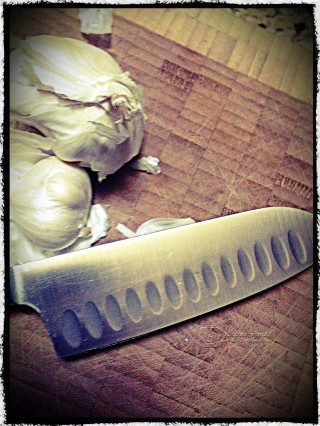
Peel the clove and cut horizontal lines through it:
Then, chop vertically through the lines to mince.
Done. It took me about 10 seconds to chop this clove up.
If the smell of garlic on your hands bothers you – and it soooo bothers me – then limit your hand’s exposure to the garlic while you cut. I have been known to put plastic lunch bags over my hands, but that’s just me.
5. Dried Basil
This may be a little controversial, but I am going to go for it: I see no point to dried basil. None. The flavor is so much weaker than fresh basil that there’s just no value in using it. And before you stop me by telling me that it’s hard to keep fresh basil on hand, I am going to tell you that I agree with you.
Keeping fresh basil on hand IS a pain. A total pain. I respect and admire those of you who grow basil – it’s allegedly easy to do but trust me, I cannot keep a plant alive to save my life. (Children, dogs, and small mammals? Sure thing. But something that sits in a pot and needs little more than water and sunlight? Forget it.) No pain, no gain: Leave the dried basil at the store.
Instead:
If you have more talent in the plant department than me (and that’s most of you), go and buy a basil plant. You can trim basil leaves off as needed and as a bonus, enjoy the smell of basil all the time.
If not, then buy basil fresh. Some stores carry basil that comes with roots attached and some stores sell it by the bunch. If you buy it by the bunch, bring it home and place it in a small cup of water so that the water covers the stems. Do not refrigerate it – leave it out and change the water daily. Basil will last several days to a week or so using this method.
Beware the item of convenience for it never stands up to the real thing. Watch this space for more Grocery Store Tramps!
Ali Wechman

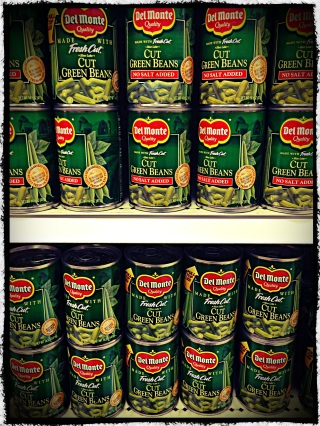
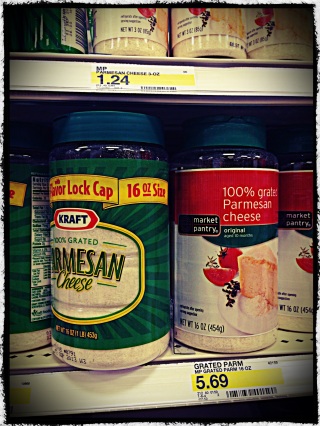
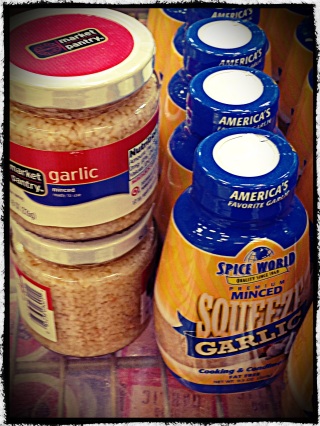
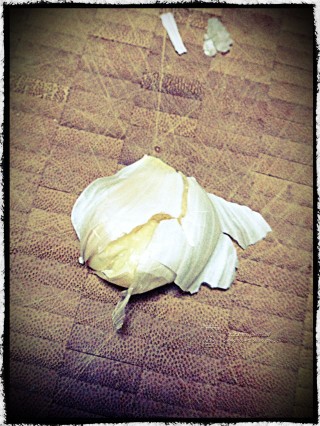
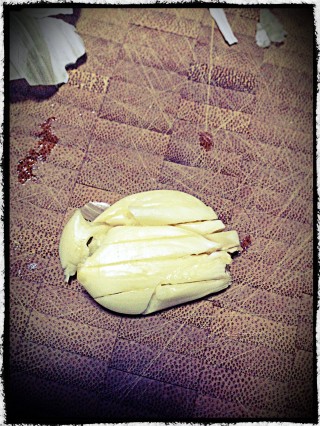
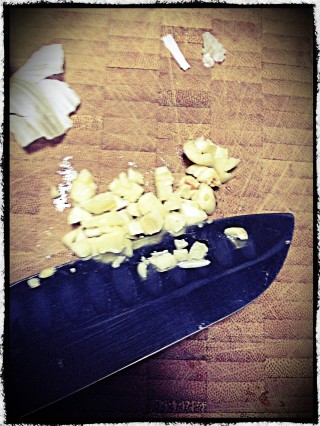
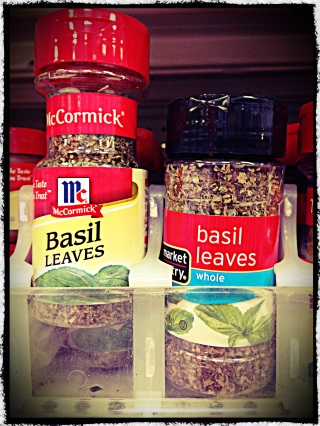
Very informative post. About fresh garlic: garlic bulbs can be stored on the counter in a garlic keeper for a long time. I have a ceramic pot designed for this purpose and it works very well. No smells and no spoilage. Never refrigerate!
OK, I have to admit… I LOVE the smell of garlic. I grew up in a kitchen filled with bickering nonne and the wafting aroma of tomatoes, basil, and garlic. The smell of garlic is the fragrance of home, contentment, and love… If a woman does not have the smell of fresh basil and garlic lightly about her like a aura – then she’s not a member of the most beautiful people, Italians! For those of you wretched hapless souls (i.e., non-Italians) in the “love must smell like a common rose” category, well then… *sigh*… here’s a tip for you: to get the smell of garlic off your fingers, simply rub your fingers on a stainless steel spoon while under running cool water (and stop accosting my nose with your department store perfumes and colognes!).
Pingback: Barbecue Pulled Chicken Sliders with Honey Coleslaw | Kitchenpants!